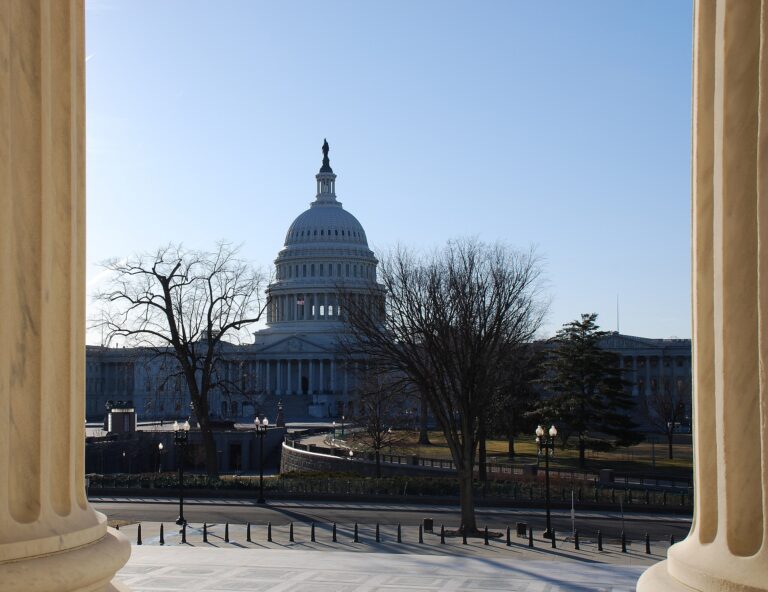
Will Abū Ḥanīfa Have a Beer and Smoke Ḥashīsh with Me in Jannah? Changing Perceptions of Khamr, Ijmā’, Bid’ah, and Sunnīte Islamic Law
Scott Bursey
Frontispiece from a copy of Kalila wa Dimna of Abuʼl-Maʻali Nasr Allah by Unknown Author (Public Domain).
Unlike the authoritative structures within Shī’a Islam which draw legitimacy from an ecclesiastical-style structure of liturgical and theological intermediaries, Sunnīs approach Islamic law from the basis of a shared consensus. This doctrine of ijmā’ (consensus), in which adherents are urged to accept historical legal rulings on the basis of ʾitmām al-ḥujjah (completion of the argument) – the common agreement of religious scholars across time has rendered these questions answered, generally speaking. At the same time, I would argue that this appearance of consensus obscures the relevance of competing narratives concerning virtually every topic covered within Islamic law. As this article will briefly explore, I will problematize the invoked rigidity of ijmā’ within Sunnī Islamic law by way of two case studies: 1) has drinking alcohol always been ḥarām (forbidden)? Additionally, given that practice of consuming hashīsh entered the Islamic world in roughly the 10th century and therefore the Prophet had no knowledge of its existence, 2) how do Sunnīte theologians justify its prohibition on the basis of Islamic law when there is no clear juridical justification within the body of Islamic law? Put differently, how do you invent Islamic law for something that was at the time of the Prophet totally unknown?
At the level of being almost idiomatic, the permissibility of consuming khamr (wine) within Sunnī Islamic law appears clearly defined. You need look no further than the Qur’an and the ḥādīths (sayings of the Prophet) which contain a small collection of sections (5, 11, 16, and 96) concerning the legitimacy of consuming alcohol to find what appears to be a determinate stance on the lawfulness of drinking alcohol; it might be “Five O’Clock Somewhere” but for Muslims, there is no time where it justifiable to pour “somethin’ tall an’ strong[,]” or is there? Drawing from these Islamic proof texts the term on which these assertions pivot is khmar [خَمْرُ], which in Arabic has a direct connotation with fermentation (be that alcohol or bread), as well as wine and liquors more generally, even with implications of jāhiliya’ian (pre-Islamic) wine poetry and the feeling of intoxication. This linguistic precedent draws a direct connection with the term āskr [أَسْكَرَ], which literally translates to ‘get drunk,’ but can also refer to wine. This is important as a central ḥādīth recorded by Jabi ibn Abdullah expands the definition of āskr (and by proxy khmar) to include anything:
Prophet said: “If a large amount of anything causes intoxication, a small amount of it is prohibited.”
It’s clear that the Prophetic stance on wine is virtually unquestionable, but the ḥādīth recorded by Jabi ibn Abdullah positions the conception of intoxication in a manner that is directly malleable to a scholar’s agency and personal judgment in the context of a legal ruling. By way of ījthād (independent reasoning), this ḥādīth could be used to classify non-alcoholic substances within the legal framework as causing a state of intoxication and in turn justifying its prohibition. However, even with this weight of evidence in mind, the lawfulness of consuming alcohol has not always been as uniformly prohibited within Sunnīte religious thought. The disciples of the 8th century theologian Abū Ḥanīfa (d. 767 CE), the father of the Hanafī school of thought, presented an entirely different position on intoxication. Specifically, the root of this critique shifts away from the permissibility of khmar, to the definition of intoxication as an aspect of drinking too much alcohol. Although the Ḥanīf School (at this time) would not encourage the consumption of nabīdh (traditional Arabia drink made from fermented dates), there would be no punishment for those who imbibe, unless they reached the point of intoxication.
As Islamic law reached a status of canonization in roughly the 12th century, the Ḥanafi’s gave into significant pressure from competing juridical schools of Sunnīte religious thought and reformed their stance on the prohibition of alcohol. This case study serves as an example of how a clearly defined Qur’anic precept such as the permissibility of khmar can present a wide range of commentaries and perceptions due to the influence of scholarly ījthād. However, what is an Islamic scholar to do when a new substance that did not exist at the time of the Prophet becomes a cause for social concern? There are no Qur’anic references, nor Prophetic ḥādīth’s, just the medium of ījthād as a tool to invoke prohibition on religious grounds, without clear religious sanction. How then did Sunnīte religious thinkers justify the prohibition of hashīsh?
An unintended aspect of the territorial and intellectual expansion of the Islamic world during the Abbasid Caliphate (750-1258), was the introduction of the practice of consuming hashīsh, in roughly the 10th century. Based on existing sources it does not appear that the Prophet, nor the Arabs more broadly had a conception of hashīsh during the lifetime of the Prophet. As the Islamic empire expanded whole swaths of the known world joined under the banner of Islam, and in doing so introduced new literature, scientific knowledge, and medical as well as cultural practices. Pertinent to our conversation is the newly converted Muslims from what is modern day Iran and India who introduced the cultural practice of consuming hashīsh. As the substance was unknown to the Islamic world during the lifetime of the Prophet, the Qur’an, as well as the ḥādīths of the Prophet are silent on this topic of its permissibility – what then is a skeptical Sunnīte theologian to do? Given the absence of a clearly undeniable prohibition, how can it be justified that consumption is not permissible? From the very beginning there were a range of opinions from Sunnī scholars who opposed the consumption of hashīsh on the basis of Islamic law. With this in mind, how do Sunnīte theologians justify the prohibition on the basis of Islamic law when there is no clear juridical justification within the body of Islamic law? Put differently, how do you invent Islamic law for something that was at the time of the Prophet totally unknown?
Sunnīte theologians who opposed the consumption of hashīsh lacked the necessary clear prohibition to offer a defined judgment against its consumption on explicitly religious grounds. The absence of a clear authoritative text prohibiting the use of hashīsh was the primary justification leveraged by the pro-hashīsh faction, as discussed by the 10th century mathematician, and poet, al-Aḥnaf al-̍Ukbarī (914-995 CE):
Know that the pure sharīʿah has not indicated that the use of drugs that cause joy (al-ʿaqāqīr al-mufarriḥah) such as saffron, bugloss, and others whose action is similar to that of this drug (hashish) is forbidden. No indication has come down from the Prophet to the effect that it is forbidden as such (taḥrīm ʿaynih) and that a ḥadd punishment has been established for eating it. Because there has been no tradition (inqiṭāʿ al-khabar) on this matter, people have permitted it and have used it.
al-̍Ukbarī underlines that the absence of a clear prohibition against the enjoyment for that which is not explicitly forbidden in scripture, and therefore renders its consumption permissible. However, the anti-hashīsh faction approached this situation on the basis of justifying their arguments with method of qiyās (deductive analogy) by which to draw an analogy between hashīsh and wine. By taking this approach the issue of the permissibility of hashīsh could be resolved on the basis of logical analogy.
- Wine (khmar) is intoxicating (āskr)
- Wine (khmar) is forbidden in Islam
- Hashish is intoxicating (āskr)
- Therefore, hashīsh is forbidden (harām)
This linear means of argumentation suggests a similarity between khmar, replete with its intoxicating qualities, and hashīsh, characterized as an intoxicant and relaxant, and therefore analogous to wine, which justifies its prohibition. Competing scholars were able to attack this ruling on the basis of qiyās, as deductive analogy fails to yield an unquestionable ruling. As argued by ʿAlam-ad-dīn Ibn Shukr (1153-1225), he critiques the method of qiyās in the format of a poem:
Hashish intoxication contains the meaning of my desire,
You dear people of intelligence and understanding.
They have declared it forbidden without any justification on the basis of reason and tradition.
Declaring forbidden what is not forbidden is forbidden.
In this passage ʿAlam-ad-dīn called into question the very structure by which prohibition rulings can be based within Islamic law. Specifically, if the methodological approach of qiyās is itself bid’ah (innovation in religion), which is strictly prohibited as the last line of the poem alluded to. This argument armed the pro-hashīsh faction with the ability to brand those who oppose the consumption of hashīsh on the grounds of Islamic law as heretics – those who leverage subjective approaches to ījthād to create new legal rulings ex nihilo. Given the implicit incongruity in rulings, assertions and method, the presumption of a uniform approach to consensus within Sunnīte thought is clearly more aspirational than real.
In the 13th century, the anti-hashīsh lobby approached the use of narcotics from a different angle, as detailed in work of the Malikī jurist Shihāb al-Dīn al-Qarāfī (d. 1285). Drawing from Qarāfī monograph, The Differences, he does not approach the permissibility of consuming hashīsh on the basis of religious ground but instead focuses on a range of rulings on two substances, “khamr and hashīsh – and their capacity for invalidating prayer.” In Qarāfī’s work he clearly identifies that in the context of consuming hashīsh the line between intoxication and the status of being corrupted (state that invalidates prayer), does offer some legal ambiguity. However, the ramifications to daily life for adherents is a more pressing concern, as although the consumption of hashīsh may not be intoxicating like wine, for some jurists it can corrupt the individual and therefore invalidates a believer’s prayer. Qarāfī’s critique strikes a middle ground between outright prohibition on the basis of qiyās and the validation of consumption as no clear ruling exists which is not predicated on ījthād. It’s Qarāfī’s focus on the maṣlaḥa (common good) of the ummah (community of believers) that replaces assertive judgments predicated on a religiously justified prohibition. The root of the concern then shifts from a declarative stance predicated on claims to legal authority, to a focus on the wellbeing of the community.
With the wide adoption of al-Qarāfī’s ruling and the canonization of the primary four Sunnīte Islamic law schools toward the end of the 12th century, there was general acceptance of the direct conflation between hashīsh and khmar, in turn prohibiting its consumption. Certainly, the consumption of hashīsh did not stop, as large swaths of the Islamic world continued to consume it on the basis of cultural practice, as well as its widespread use within Ṣūfi circles. Moreover, the issue of hashīsh consumption transitioned away from an explicitly religiously coded concern to an argument predicated on class distinction. During the early medieval era “hashish was widely regarded as anathema to all members of society of the highest social standing[,]” where amongst the higher classes the practice of drinking wine was more common. Therefore, hashīsh became the intoxicant of the common man, this social stigma presenting a clear social justification against its consumption for fear of being conflated with those of less desirable social standing.
The goal of these case studies was to demonstrate that within Sunnīte religious thought the cleavages between the four primary schools of Sunnīte Islamic law (although wider in the past) remain deeply relevant, even with the Prophetic calls for ijmā’ within the ummah. Although contemporary positions on rulings resulting in defined fiqh (study of Islamic Law) offer the outward appearance of ijmā’, in reality there still exists a great deal of ambiguity, and not just between different schools of Sunnīte religious thought, but on central issues as elucidated in our case studies. With that in mind, it’s unclear if Abū Ḥanīfa will have a beer, and smoke hashīsh with me in paradise. What is clear however, is that the outward appearance of consensus at the foundation of Sunnīte religious thought directly obscures a whole range of competing, yet equally important viewpoints pertaining to every aspect of Islamic law. ♦

Scott Bursey is a PhD Candidate, and International student (Canadian), in the Department of Religion at Florida State University. Scott’s research interests revolve around modern Islamist thought as it is manifested by both resurgent and revivalist thinkers operating in Egypt, Saudi Arabia and the Gulf – with particular interest in the works of Muḥammad Quṭb (1919-2014).
Recommended Citation
Bursey, Scott. “Will Abū Ḥanīfa Have a Beer and Smoke Ḥashīsh with Me in Jannah? Changing Perceptions of Khamr, Ijmā’, Bid’ah, and Sunnīte Islamic Law.” Canopy Forum, April 17, 2025. https://canopyforum.org/2025/04/17/will-abu-hanifa-have-a-beer-and-smoke-hashish-with-me-in-jannah-changing-perceptions-of-khamr-ijma-bidah-and-sunnite-islamic-law/.
Recent Posts










